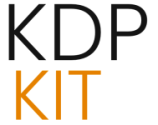Rumble’s Q2 2025: Revenue Up, But What’s Next?

Rumble Inc. recently dropped its Q2 2025 earnings report, and it’s a mixed bag, but mostly good news. They announced revenues of $25.08 million, which is a solid 12% jump from last year, even beating what analysts were expecting. This growth is largely thanks to how well they’re monetizing their audience through things like Rumble Premium and local subscriptions. It’s great to see that audience monetization revenue is up, contributing significantly to the overall revenue increase. However, there’s a bit of a hiccup with their earnings per share (EPS). They reported a loss of $0.12 per share, which was a bit more than the predicted $0.09 loss. Now, you might think that would send investors running, but surprisingly, Rumble’s stock shot up by about 11.23% in after-hours trading. This tells us that investors are looking at the bigger picture, the company’s strategy, and its future potential. What’s really impressive is that Rumble has kept its Monthly Active Users (MAUs) steady at 51 million for eight quarters in a row. That’s some serious platform stickiness! Even with big changes, like a major live streamer leaving, the community has stayed strong. Plus, they’ve managed to cut down their adjusted EBITDA loss to $20.5 million from $28.7 million last year. That shows they’re really focusing on cutting costs and getting smarter about how they make money. Financially, Rumble is in a good spot, with $306.4 million in liquidity, including a healthy amount of cash and even some Bitcoin. They’re also working on reducing their costs, with a 26% year-over-year drop in the cost of services, mainly by cutting down on programming and content expenses. Looking ahead, Rumble is making some big moves. They’re planning to launch Rumble Wallet, which will help them expand internationally and give creators new ways to earn. They’re also exploring the idea of acquiring Northern Data, an AI company. This move would really put them in line with the industry’s big push towards using AI for growth and innovation.
Revenue Growth and Monetization Strategies: The Money Makers
Rumble’s 12% revenue growth is a big deal. It’s not just one thing; it’s a mix of audience monetization, which includes Rumble Premium, local subscriptions, licensing, and even tipping. While advertising revenue saw a slight dip, other initiatives are picking up the slack. This diversification is key in today’s media landscape.
User Base and Engagement: Sticking Around
Maintaining 51 million MAUs for eight consecutive quarters is no small feat. It shows that Rumble has built a loyal community. Even when big names leave, the platform’s core users remain engaged. This stability is a huge asset.
Cost Management: Getting Leaner
A 26% reduction in the cost of services is fantastic. By trimming programming and content expenses, Rumble is becoming more efficient. This focus on operational efficiency, along with the improved adjusted EBITDA loss, shows a company that’s serious about its bottom line.
Strategic Partnerships: Building Bridges
New agreements with Cumulus Media and a top AI innovator, plus their ongoing work with Tether, are crucial. These partnerships are all about expanding Rumble’s reach and capabilities. While some analyses might call their financial health ‘WEAK’ due to current profitability, their strong liquidity allows them to keep investing in these growth areas.
The Shifting Sands of Digital Media in 2025. Find out more about Rumble Q2 2025 earnings analysis.
The digital media world is in constant flux, and 2025 is no exception. We’re seeing major trends that are changing everything:
The All-Encompassing Power of AI
Artificial Intelligence (AI) and Machine Learning (ML) are not just buzzwords anymore; they’re fundamentally changing how digital media works. Platforms are using AI to deliver content that’s tailored just for you. Think Netflix recommending your next binge-watch – that’s AI at work. And it’s not just about delivery; AI is also revolutionizing content creation. Tools can now generate text, music, and even visuals, speeding up production and opening up new creative doors. Many publishers are already using AI to streamline their work, automating repetitive tasks and optimizing ad campaigns. The big question mark? Protecting intellectual property when AI trains on existing content. Legal teams are definitely looking into this.
Consumer Behavior: What We Want and How We Want It
You and I, we’re changing too. We want content that’s personalized, engaging, and easy to access. User experience is king, and we expect things to work smoothly across all our devices and platforms. Short-form video is still huge, thanks to TikTok and Instagram Reels. Voice search and audio content are also on the rise, especially with more smart speakers in our homes. We’re also paying more attention to brands that are ethical and sustainable. And let’s not forget social commerce – buying stuff directly through social media is blurring the lines between scrolling and shopping. On top of all this, there’s a growing desire for balance, a kind of “digital detox” to step away from screens and reconnect with the real world.
The Regulatory Maze
Navigating the rules and regulations in digital media is getting trickier. Different countries have different priorities, leading to a fragmented regulatory landscape. The US is focusing on leading the AI race, while the UK is trying to create an innovation-friendly environment, though some new laws add complexity. India is looking at tighter controls on data and platforms. Key areas of focus for regulators include data privacy, with new laws and guidance expected. The EU’s AI Act and Digital Markets Act are major developments that will influence data-related legislation. Plus, there’s a growing concern about data nationalism and sovereignty, which means more country-specific rules.
New Technologies on the Horizon. Find out more about digital media content platforms trends 2025 guide.
Beyond AI, other technologies are set to shake things up. Augmented Reality (AR) and Virtual Reality (VR) are making digital content more interactive and immersive, with cool applications in marketing and retail. The expansion of 5G is paving the way for better video streaming, real-time gaming, and smoother AR/VR experiences. Blockchain technology is also finding its place in digital media, and the Internet of Things (IoT) is helping create personalized media experiences through connected devices.
Key Trends and Opportunities for Publishers in 2025
The publishing world is adapting, and publishers are really focusing on innovation, keeping readers hooked, and finding new ways to make money.
Quality Content and Growing Audiences
Publishers know they need to create high-quality, insightful content to stand out. Growing their audience is also a top priority, and many are using AI and analytics to help attract and keep subscribers.
Diversifying Income Streams
It’s all about new revenue streams. Publishers are looking to increase ad revenue, but they’re also leaning heavily on subscription and “freemium” models. Affiliate marketing, brand sponsorships, online courses, and digital products are also becoming important income sources.
AI for Smarter Workflows and Personalization
Publishers are actively using AI to work more efficiently and deliver more personalized content. AI tools are automating tasks, optimizing content distribution, and improving how they target audiences. Generative AI, in particular, is making content creation more accessible, allowing publishers to create personalized content at scale.
Making Content Accessible. Find out more about AI impact on digital publishing workflows tips.
The European Accessibility Act (EAA) is now in full effect, meaning digital products and services need to be accessible to people with disabilities. Publishers are seeing this not just as a requirement but as an opportunity to design more inclusively and reach a wider audience.
Adapting to How We Consume Media
Social platforms are becoming huge players in media and entertainment. Younger audiences, especially, are spending more time on social video, user-generated content, and recommendation algorithms. This means traditional media companies have to adapt, perhaps by aggregating larger audiences, investing in advanced ad tech, and embracing AI.
The Bigger Picture: Industry Implications and What’s Next
The trends we’re seeing have broad implications for the entire industry. Social platforms are becoming central hubs for media, AI is everywhere, and consumer expectations are constantly rising. It’s a dynamic and competitive environment.
Social Platforms: The New Media Gatekeepers
Social platforms are no longer just places to connect with friends; they’re major destinations for media and entertainment. Their advanced ad tech, AI capabilities, and vast user data give them a significant edge in reaching audiences and influencing purchasing decisions. Traditional media companies need to rethink their strategies to compete for attention and ad spending.
AI: The Engine of Innovation. Find out more about consumer behavior shifts in media consumption strategies.
AI is set to be a major differentiator in 2025. It’s driving innovation in how content is created, distributed, and monetized. Publishers and creators who effectively use AI will likely gain a competitive advantage through increased efficiency, better personalization, and new revenue opportunities.
Agility is Key
Success in digital publishing in the future will depend on being agile and having foresight. Publishers who adapt to trends, embrace new technologies, and build strong relationships with their readers will be best positioned to thrive. This means diversifying revenue, focusing on quality content, and understanding the complex digital ecosystem.
Navigating Regulations and Ethics
As the digital world changes, so do the rules and ethical considerations. Publishers need to stay on top of data privacy laws, accessibility standards, and new regulations around AI and digital platforms. Addressing concerns about content ownership, brand integrity, and responsible AI use will be crucial for building trust and long-term success.
Opportunities in Immersive Experiences
Emerging tech like AR and VR offer exciting ways to create more immersive and interactive content. Publishers can use these technologies to tell stories in unique ways, boost user engagement, and create memorable brand interactions.
Conclusion: A Bright Future, But Watch Out!
The digital media and content platforms sector is in a period of exciting transformation. Rumble, with its recent performance and strategic moves, is showing resilience and ambition. AI, changing consumer habits, and evolving regulations are the main forces driving this evolution. Publishers who embrace innovation, focus on quality content, diversify their income, and adapt to new technologies are set up for success in 2025 and beyond. The industry’s ability to handle these challenges and seize new opportunities will shape its future, promising a landscape rich with potential for growth and engagement. What are your thoughts on these trends? How do you see AI impacting your favorite content platforms? Let us know in the comments below!








